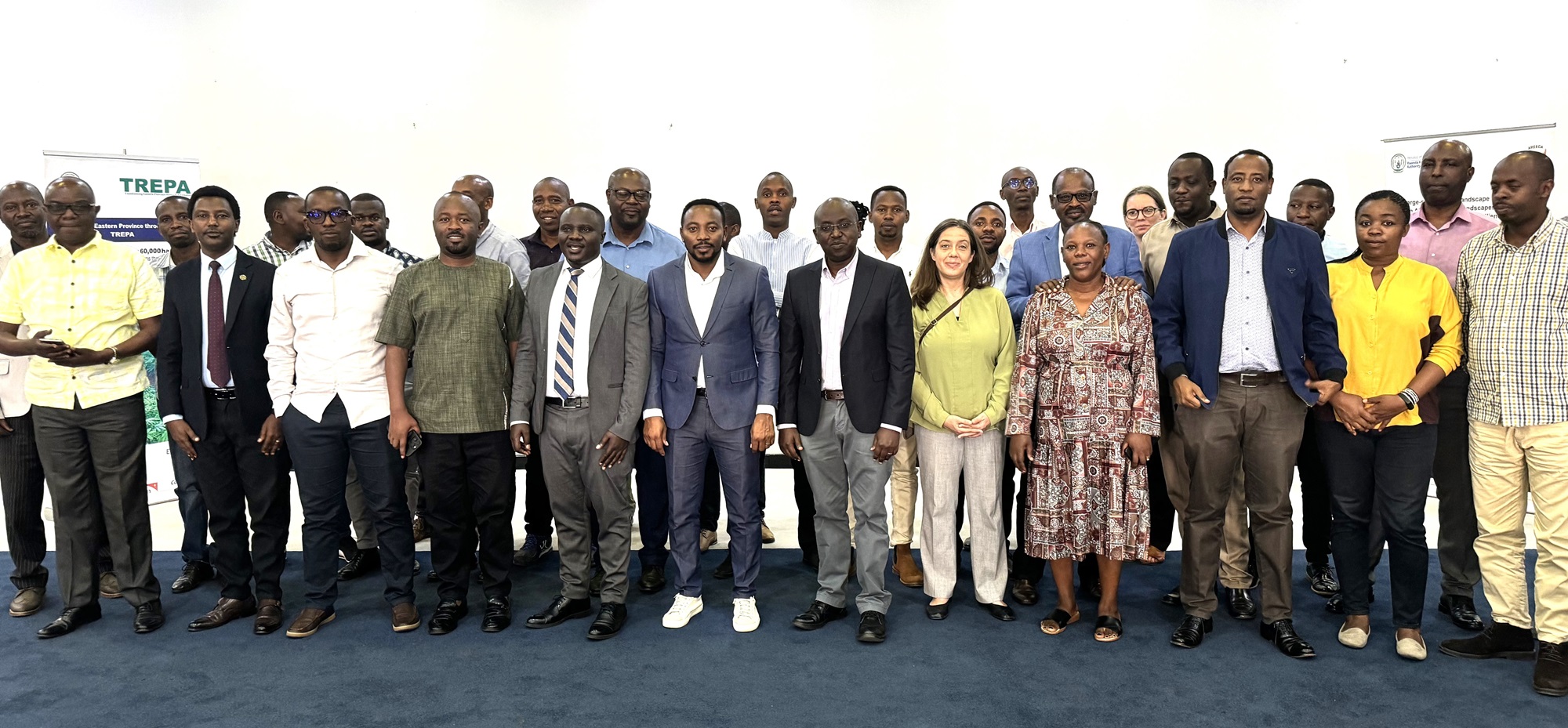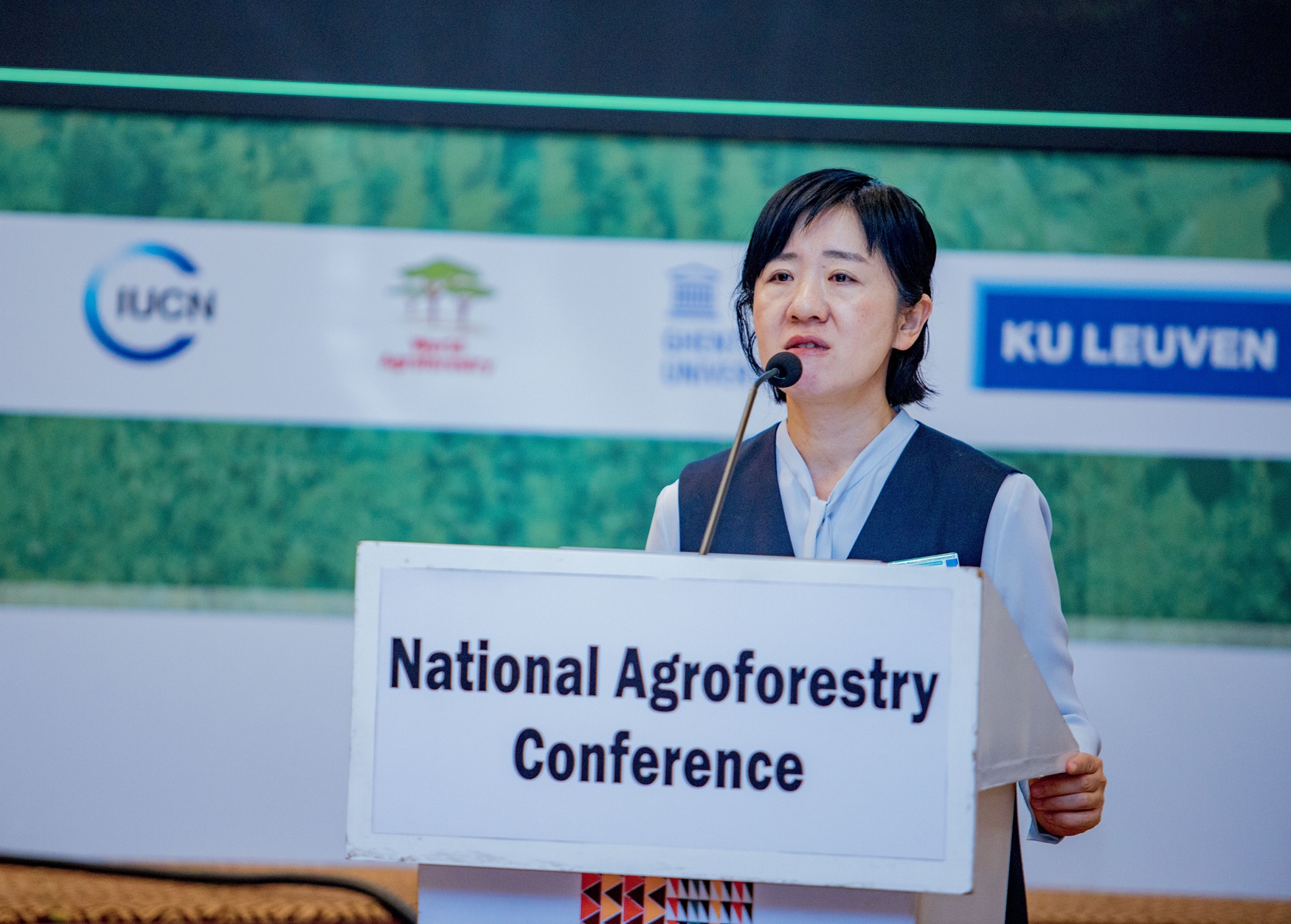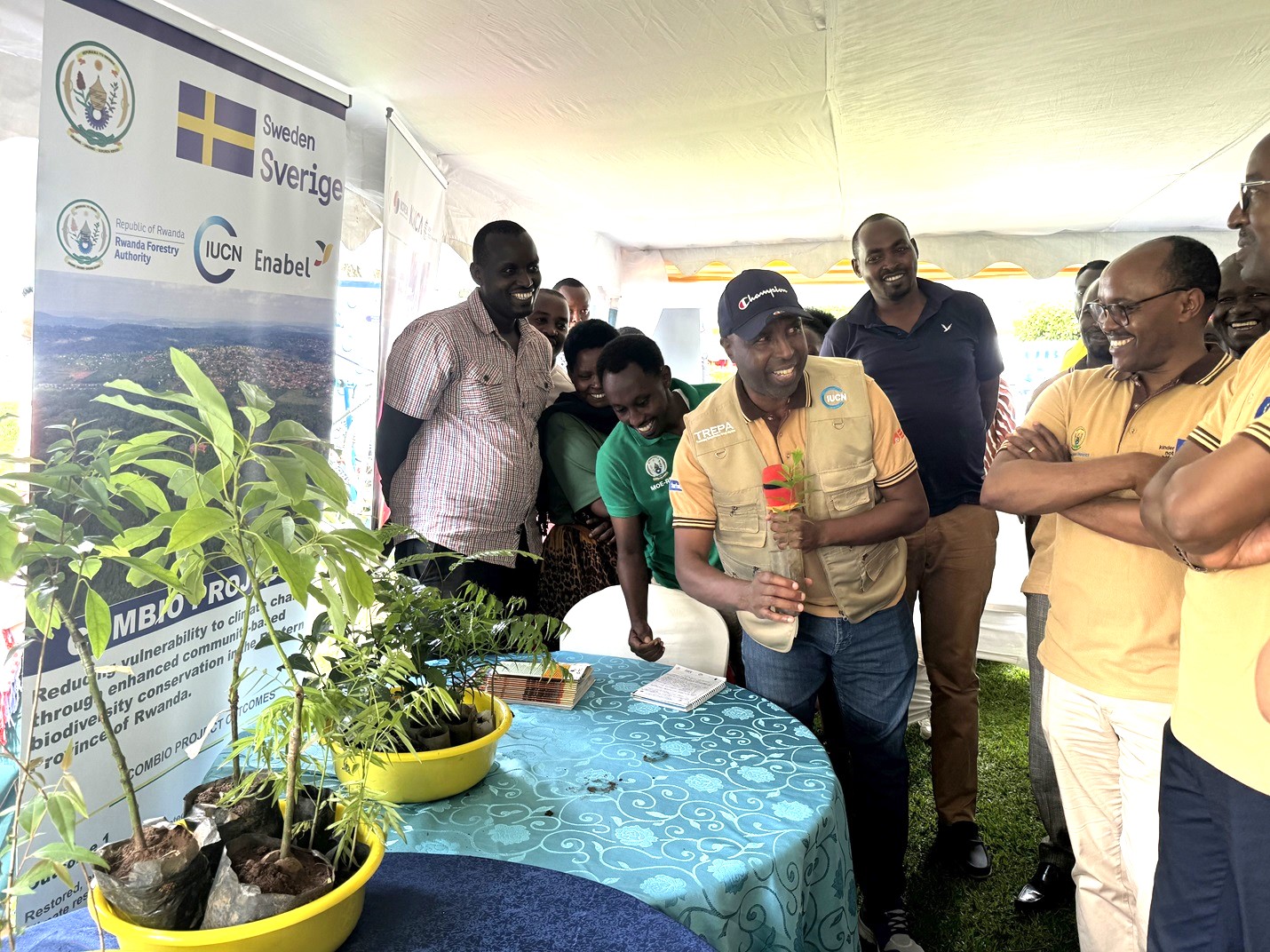Innovative investments promoted for improved livelihoods and conservation benefits under EWMR project
SNV’s role in the EWMR Technical Assistance (TA) Consortium is to support the development of innovative finance mechanisms and value chains to improve economic and ecological benefits within Sebeya and other catchments. To accomplish this, key interventions have been focusing on improving productivity, enhancing access to inputs and products’ markets and supporting innovative financing mechanisms for sustainable livelihoods and landscape restoration.
During the year 2020, Irish potatoes, tomatoes, onions, Carrots, cabbage, white eggplants, Avocado and sweet bananas were identified as high potential crops for generating incomes for farmers. Trainings in Climate Smart Agriculture (CSA) brought together 107 farmers’, Sector and District agronomists and other relevant stakeholders.
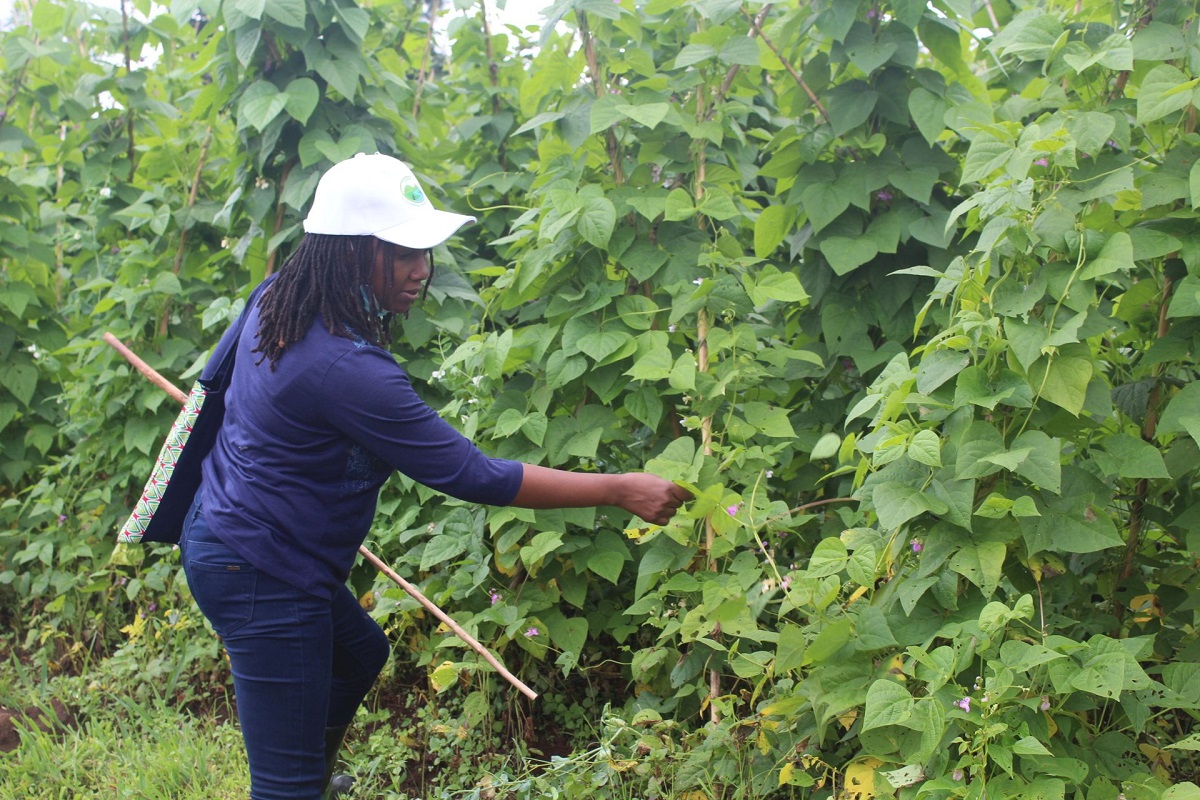 Photo: Fridah Gacheri - Agri-Food Sector Leader_ SNV visited green beans farm in Ngororero district.
Photo: Fridah Gacheri - Agri-Food Sector Leader_ SNV visited green beans farm in Ngororero district.
A study on livestock preferences in the catchment culminated in design of a livestock intervention that is tailored to community needs and resource endowments. As a result, 748 beneficiaries for cows and 2,628 beneficiaries of small livestock were selected using criteria that was jointly developed by the EWMR consortium, Districts and local authorities. The beneficiaries will also receive relevant animal husbandry trainings as well as fodder production trainings to optimize the benefits of integrating livestock in farming systems.
Through participatory planning and scoping exercises, sustainable income generating activities (IGAs) that are suitable for vulnerable groups have been identified. These activities aim at providing alternative livelihood options for poor community members. Such activities include rearing small livestock and kitchen gardening to improve household nutrition among others. Practical training on establishment of kitchen gardens that incorporates fruits was started with the aim of reducing malnutrition that is prevalent across the catchment.
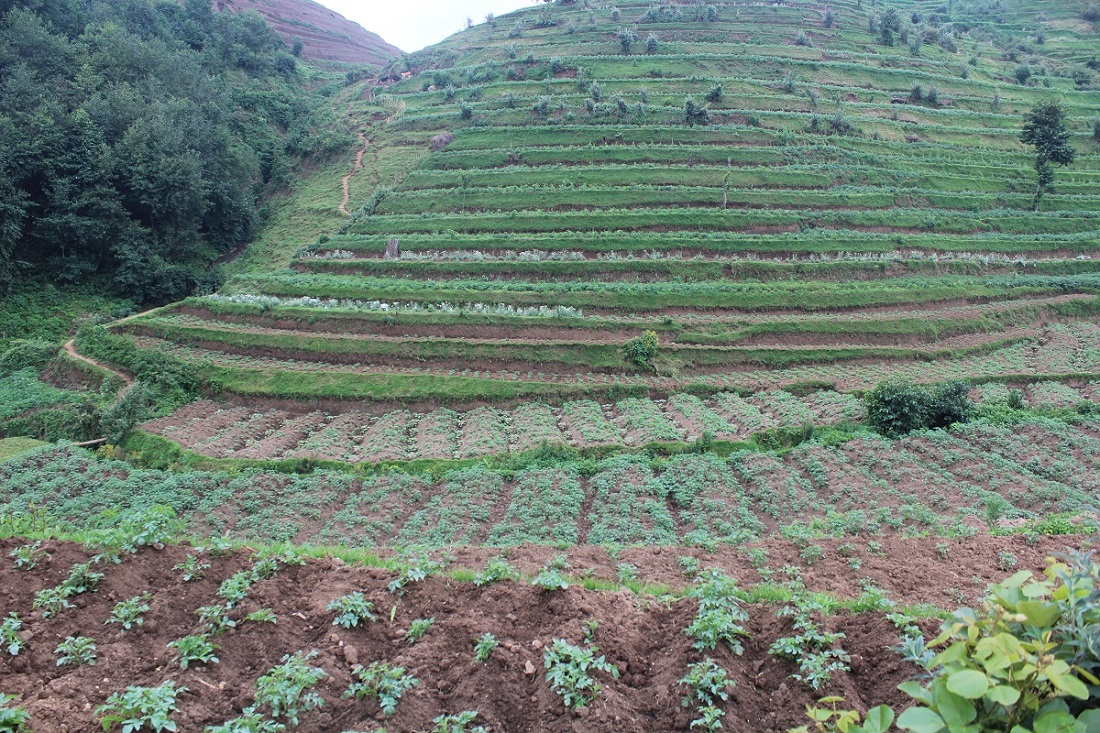 Photo: Farmers are mobilized to adopt climate-smart agriculture practices such as applying organic manure
Photo: Farmers are mobilized to adopt climate-smart agriculture practices such as applying organic manure
Communities are supported to set up and manage savings groups to strengthen resilience and improve preparedness in case of flooding or drought. The savings groups also act as a vehicle to enhance access to informal credit that can be reinvested in agriculture or other income generating activities. During the year 2020-2021, the project target is to work with 101 savings groups to overcome various gaps such as governance, record keeping financial management and smart goal setting. The target is to mobilize community members that are gaining from over 11,640 jobs that have been created by implementation of landscape restoration measures into groups that not only become savings vehicles but also can provide ecosystems services for sustainable restoration of the Sebeya catchment.
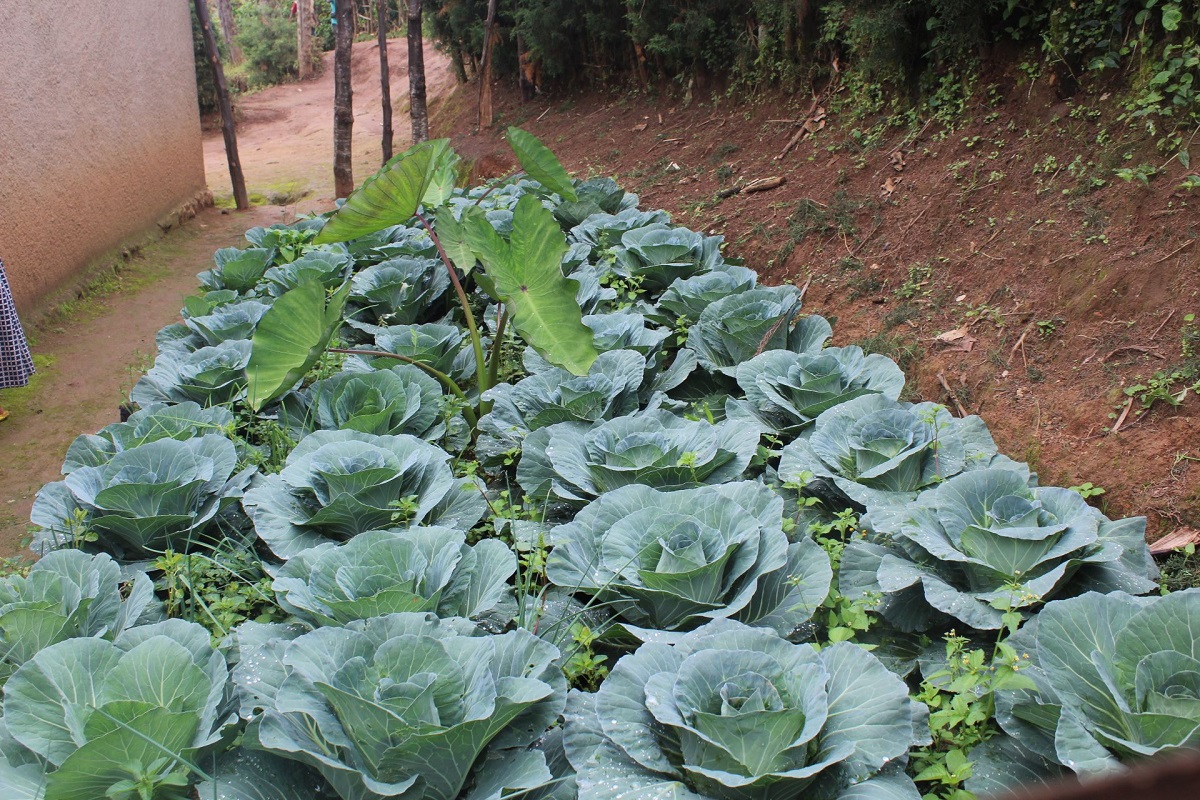 Photo: IUCN Rwanda /Cabbage farm
Photo: IUCN Rwanda /Cabbage farm
Before landscape restoration intervention measures started on the ground, casual workers were mobilized and sensitized on landscape restoration measures especially on radical & progressive terraces, tree planting, gully rehabilitation, riverbank protection and other Soil and Water Management Measures in 5 villages of Murunda Sector: Karumbi, Satinsyi, Kajugujugu, Nyenyeri and Karuruma.
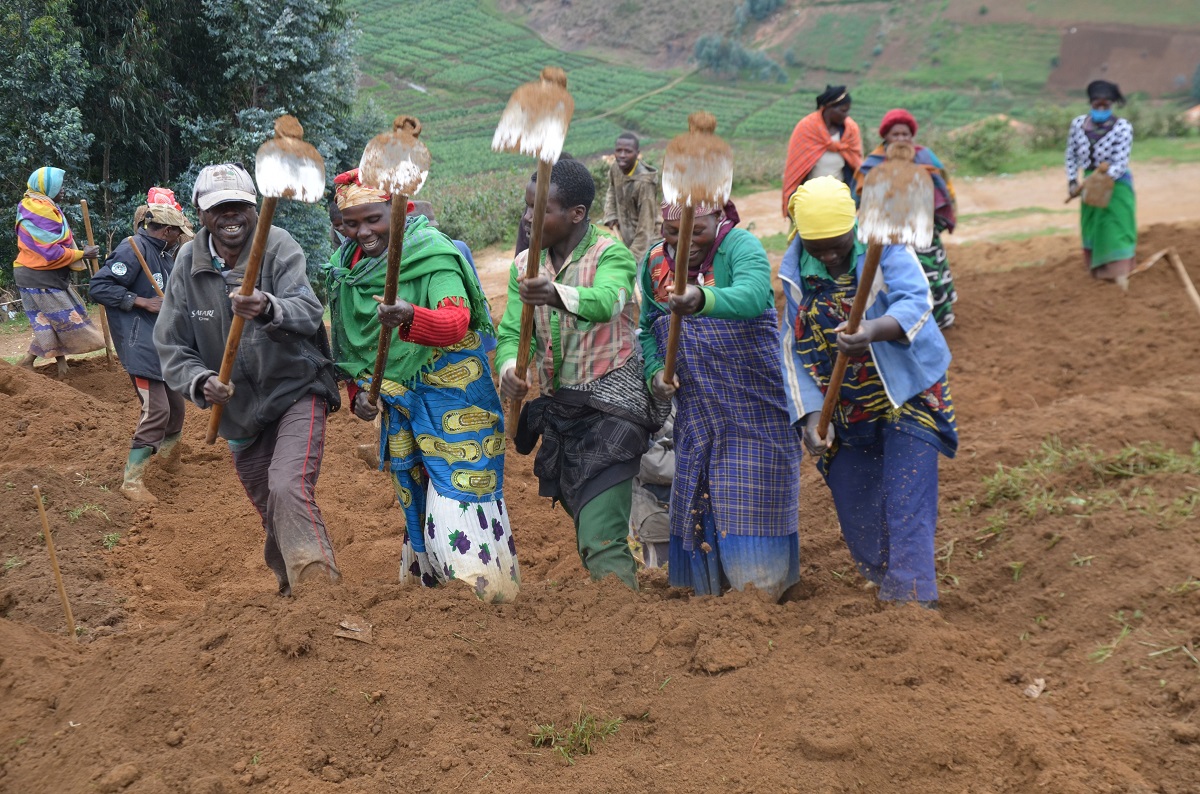 Photo: The community was empowered to apply adaptation measures on climate change including developing radical and progress terraces.
Photo: The community was empowered to apply adaptation measures on climate change including developing radical and progress terraces.
The community was empowered to apply adaptation measures on climate change including trees planting, terracing and water harvesting techniques.
Categories identified include people with disabilities, historically marginalized peoples, genocide survivors and other vulnerable groups. There is a plan to help them graduate out of poverty. The plan includes prioritizing them during job recruitment in the Sebeya project, sensitizing them to save some of the money earned and set up small businesses, helping them to identify plots for use in small scale agricultural activities and enterprises and giving them livestock.
Awareness meetings have been conducted in Murunda Sector with local leaders to discuss their role in community landscape restoration approaches.
Appropriate sites for tanks installation for rain water harvesting were assessed in Kajugujugu, Karumbi and Nyenyeri in Murunda sector in Sebeya up-stream Catchment.
Villages and cooperatives leaders were mobilized on the adaptation measures relevant to farm productivity and household income generation and were requested to mobilize the farmers in their respective villages and cooperatives to use them. This kind of Training of Trainers (ToT) methods was used because it was not possible to organize community meetings due to COVID- 19.
Five best performing crops were identified in Karumbi, Nyenyeri, Kajugujugu, Karuruma and Satinsyi of Murunda sector of Rutsiro District. Those crops are: Peas, Irish Potato, Beans, Maize and Wheat. In Bambiro village of Muhanda Sector in Ngororero district, three crops: Maize, Irish Potato and Beans were identified. 650 Farmers/Households adopted resilient measures in Murunda Sector of Rutsiro district.
Community mobilization activities within Rubavu, Rutsiro, Nyabihu, and Ngororero districts of Sebeya Catchment encourage community members to actively engage in the participatory planning of landscape restoration and integrated water resources management measures.
 Photo: Nyiranzabarantuma Claudine, a Rubavu resident taking part in the construction of radical terraces
Photo: Nyiranzabarantuma Claudine, a Rubavu resident taking part in the construction of radical terraces
Nyiranzabarantuma Claudine, a Rubavu resident taking part in the construction of radical terraces, tells of how the Sebeya catchment landscape restoration and soil erosion control measures such as terracing, agroforestry, and buffer strips contribute to protecting their crops, their domestic animals and even their own lives. She says every rainy season they were victims of Sebeya floods. "Today, we hope that when the project is completed, excess run-off water will no longer be the cause of production losses or deaths," says Claudine.
For Mwanzimwabo Aloys, a resident of Ngororero, income earned through participating in the Sebeya Project matters greatly to him. But, he insists, the opportunity to be involved in activities designed to save the lives of his community matters more. "We have participated in several meetings about this project at different levels where we’ve learned about its objectives and engaged in the planning and implementation process. We were able to ask questions and receive corresponding answers, share our suggestions, which were valued. Today, there is a good, common understanding of the project. We feel fully engaged in executing and maintaining the project's activities," says Aloys.
As far as community mobilization and engagement are concerned, RWARRI has conducted several meetings with local authorities, farmer representatives, and agriculture promoters at the district, sector, cell, and village levels where interactions focused on raising awareness of the Sebeya catchment restoration leading to gaining community members full engagement and feelings of ownership. As a result, community members are mobilized to engage in measures to control erosion by creating trenches, constructing radical and progressive terraces, planting agroforestry trees, planting grass for soil protection and fodder for animals and maintaining existing drainage canals.
Farmers are mobilized to adopt climate-smart agriculture practices such as applying organic manure, mulching, crop rotation, planting on time as well as measures such as rainwater harvesting. Through this engagement farmers have developed increased respect for authorities, Farmer Field School facilitators, agriculture promoters as well as experts in agriculture and livestock husbandry, seeing them as partners in improving their livelihoods and well-being.
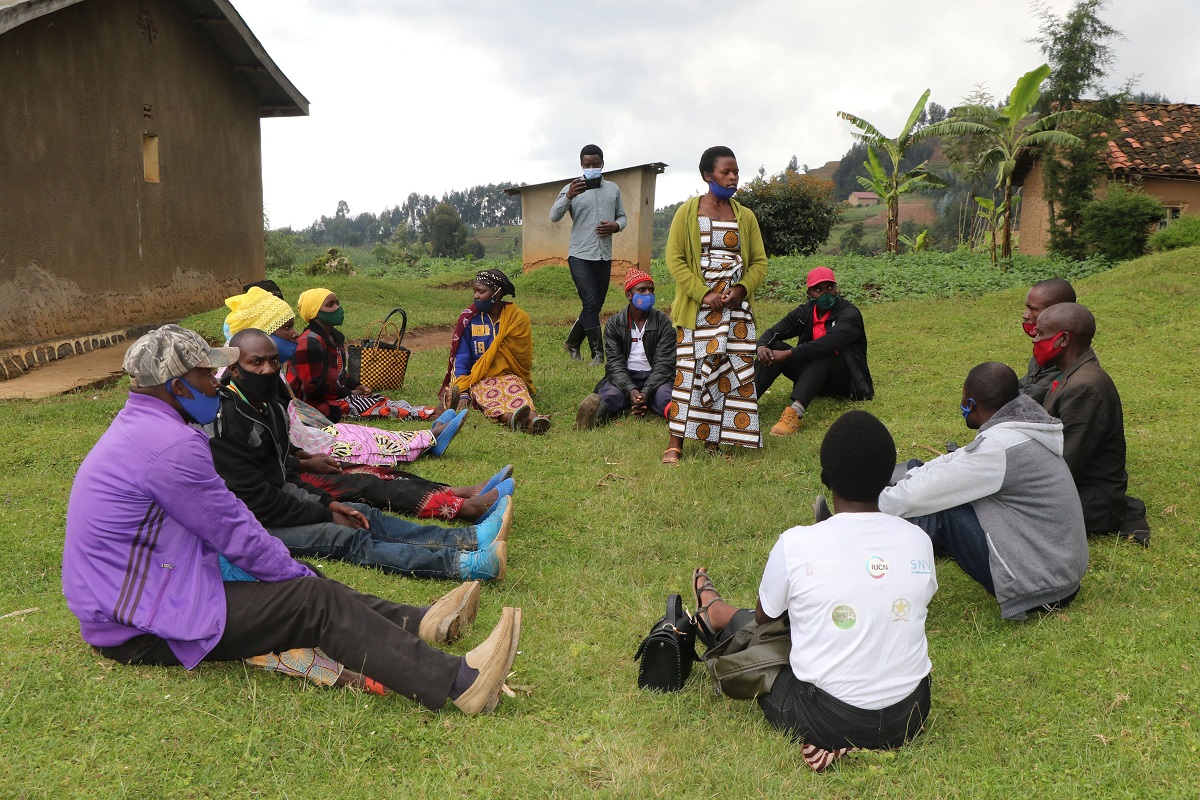 Photo: Awareness meetings have been conducted
Photo: Awareness meetings have been conducted
Disclaimer
Opinions expressed in posts featured on any Crossroads or other blogs and in related comments are those of the authors and do not necessarily reflect the opinions of IUCN or a consensus of its Member organisations.
IUCN moderates comments and reserves the right to remove posts that are deemed inappropriate, commercial in nature or unrelated to blog posts.
